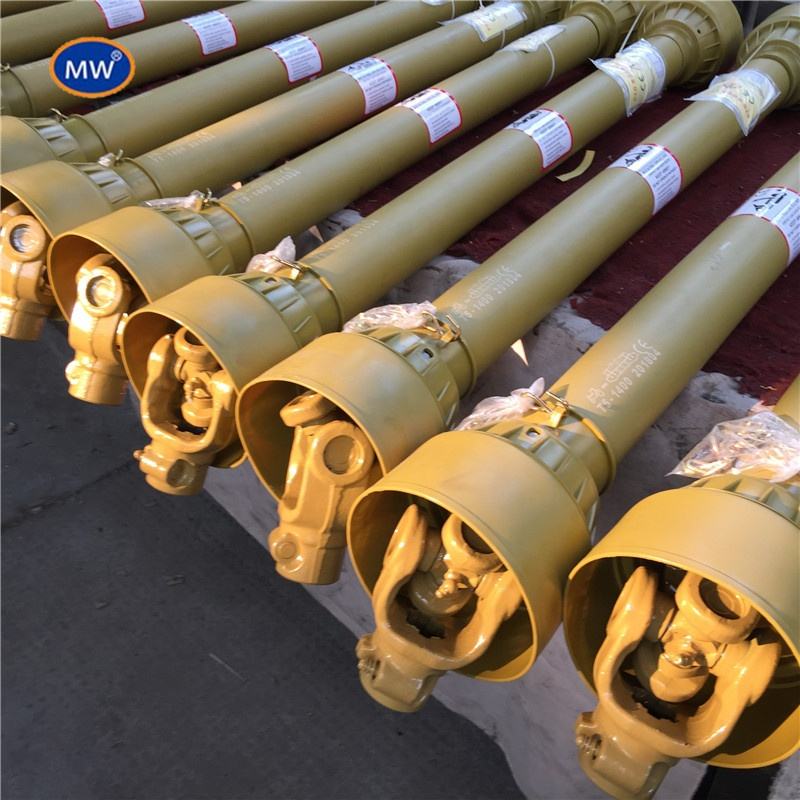As a fundamental component in agricultural, industrial, and construction machinery, the Power Take-Off (PTO) shaft is essential for transferring mechanical power from a tractor or engine to an attached implement. With over two decades of expertise in optimizing equipment performance, we offer a comprehensive guide to understanding PTO shafts, their specifications, and applications. Designed for durability and efficiency, our PTO shafts ensure seamless power transmission, reducing downtime and enhancing productivity.
A PTO shaft is a driveline component that connects a power source, such as a tractor, to various implements like mowers, balers, or pumps. It transmits rotational power, enabling the implement to perform its intended function. Typically, PTO shafts consist of telescoping tubes, universal joints, and safety shields to accommodate movement and protect operators.
Our PTO shafts are engineered to meet rigorous standards, ensuring reliability across diverse applications. Below are the primary parameters detailed in lists and tables for clarity.
| Parameter | Description | Common Values |
|---|---|---|
| PTO Speed | Rotational speed in RPM (revolutions per minute) | 540 RPM, 1000 RPM, 1500 RPM |
| Shaft Diameter | Outer diameter of the telescoping tubes | 1-3/8 inches, 1-3/4 inches, 2 inches |
| Length Range | Minimum to maximum extended length | 24 inches to 120 inches |
| Torque Capacity | Maximum torque transmission in lb-ft or Nm | Up to 600 lb-ft (814 Nm) |
| Weight | Approximate weight for handling and shipping | 15-50 lbs (6.8-22.7 kg) |
To assist in selecting and maintaining your PTO shaft, here are answers to frequently asked questions.
540 RPM and 1000 RPM refer to the rotational speed at which the PTO shaft operates. A 540 RPM shaft is commonly used for lighter implements such as small mowers or sprayers, providing lower speed and higher torque. In contrast, a 1000 RPM shaft is designed for heavier equipment like large balers or forage harvesters, offering higher speed and efficiency. Always match the PTO speed to the implement's requirements to prevent damage and ensure optimal performance.
To determine the correct length, measure the distance between the tractor's PTO stub and the implement's input shaft when both are connected and in a straight line. The PTO shaft should be slightly shorter than this distance to allow for telescoping during turns and elevation changes. A general rule is to have a minimum overlap of 4-6 inches in the telescoping sections to avoid separation. Refer to the implement's manual for specific length recommendations.
Regular maintenance includes lubricating the universal joints and telescoping sections every 50 hours of operation or as specified by the manufacturer. Use high-quality grease to reduce friction and wear. Inspect the shaft for cracks, wear, or damage to the shields, and replace any worn components immediately. Always ensure the safety shields are intact and securely attached to prevent accidents. Store the PTO shaft in a dry, clean area when not in use to avoid corrosion.
Yes, PTO shafts are generally interchangeable if the specifications match, such as PTO speed, shaft diameter, and hitch category. However, it is crucial to verify compatibility by checking the tractor's PTO type (e.g., 6-spline or 21-spline) and the implement's input requirements. Using an incompatible shaft can lead to equipment failure or safety hazards. Consult with a dealer or refer to product manuals to ensure proper fit.
Always disengage the PTO and turn off the engine before connecting or disconnecting the shaft. Wear close-fitting clothing to avoid entanglement, and never step over a rotating PTO shaft. Ensure that all safety shields are in place and undamaged to protect against rotating parts. Regularly check for loose bolts or worn components, and keep bystanders at a safe distance during operation. Follow all manufacturer guidelines and local safety regulations.
Vibration can result from misalignment, worn universal joints, or imbalance in the shaft. First, check that the tractor and implement are properly aligned and that the PTO shaft is the correct length. Inspect the universal joints for wear or lack of lubrication, and replace them if necessary. If vibration persists, the shaft may be bent or unbalanced; in such cases, have it professionally inspected or replaced. Avoid operating a vibrating shaft, as it can cause damage to both the shaft and equipment.
The lifespan of a PTO shaft depends on usage, maintenance, and operating conditions. With proper care, including regular lubrication and inspection, a high-quality PTO shaft can last 5-10 years or more in moderate use. Heavy-duty applications or exposure to harsh environments may reduce this lifespan. Factors such as overloading, improper alignment, or lack of maintenance can lead to premature failure. Always follow the manufacturer's recommendations for service intervals.
Yes, some PTO shafts are designed with environmentally friendly materials, such as recyclable steel alloys and biodegradable lubricants. Additionally, models with enhanced efficiency can reduce fuel consumption by transmitting power more effectively, lowering the carbon footprint. Look for products that comply with environmental standards like RoHS or ISO 14001. Always dispose of old PTO shafts and components at designated recycling facilities.











